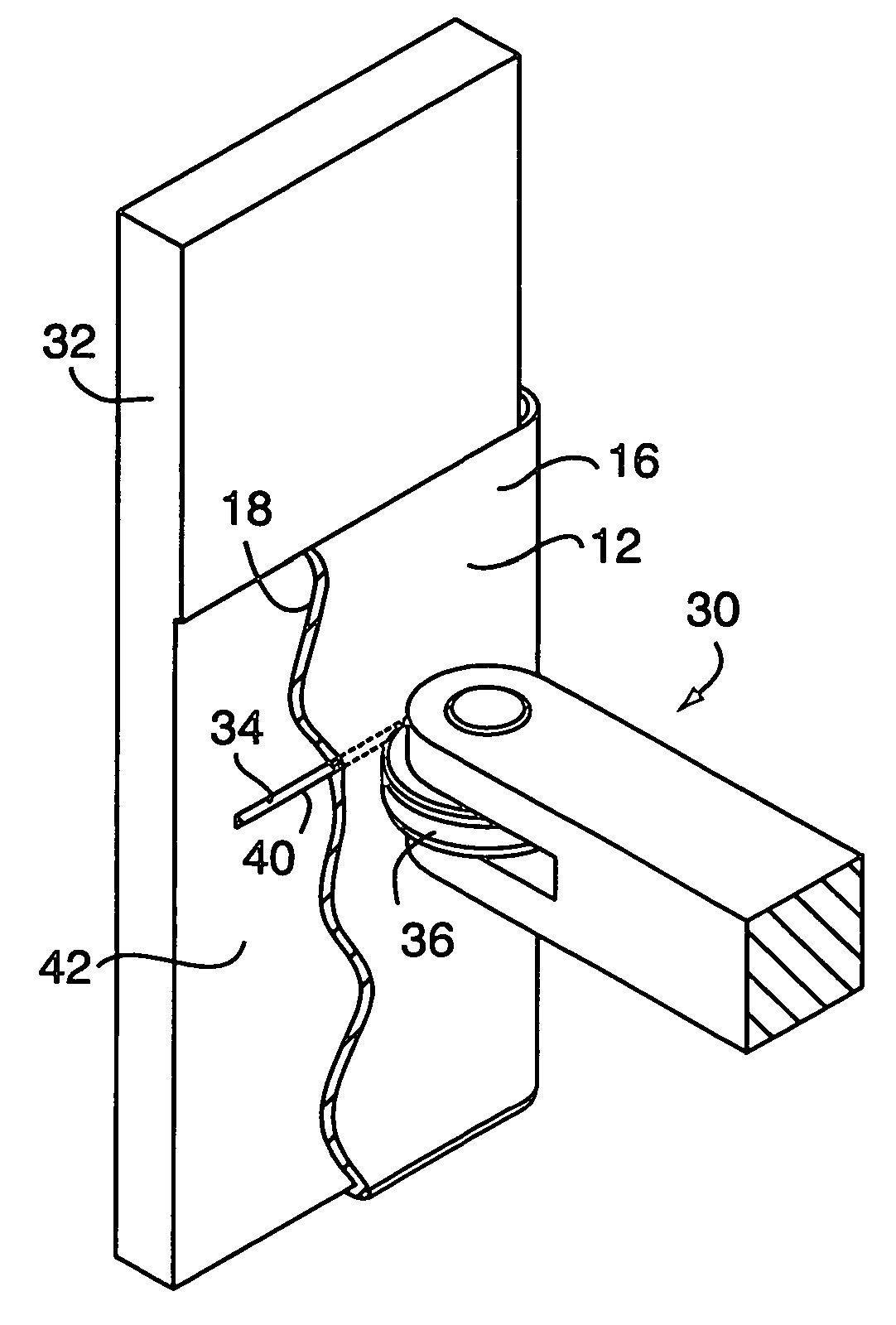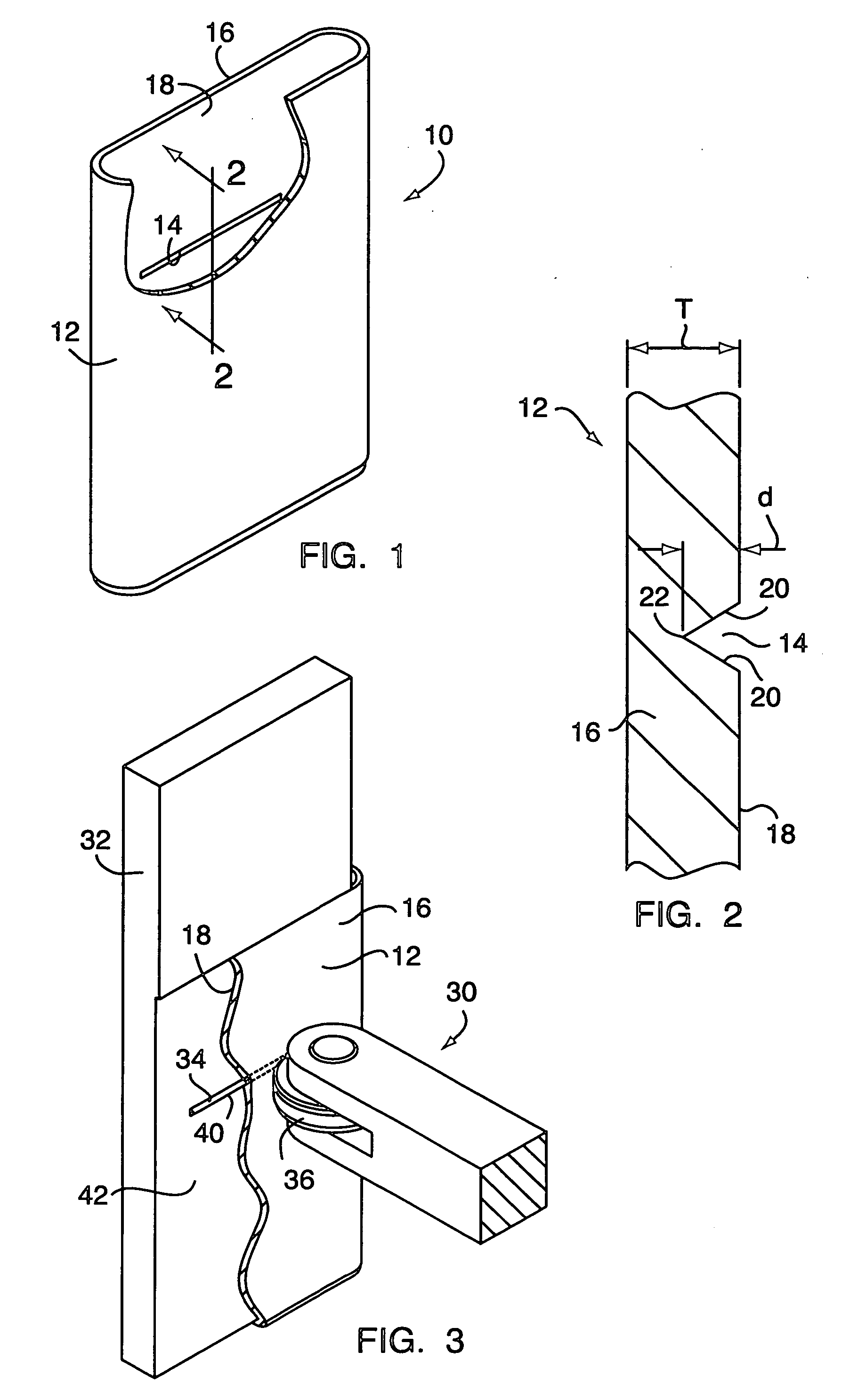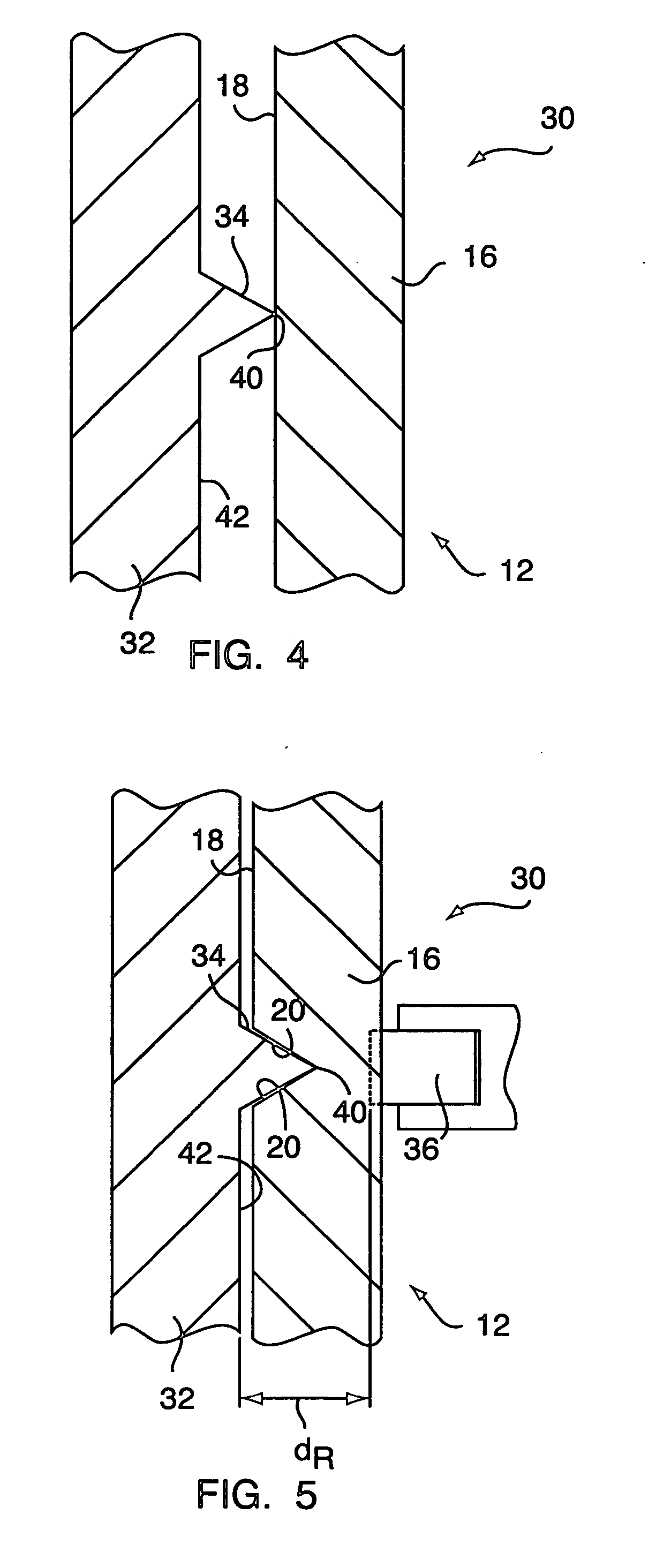Battery can with rupturable safety vent and method of forming
- Summary
- Abstract
- Description
- Claims
- Application Information
AI Technical Summary
Benefits of technology
Problems solved by technology
Method used
Image
Examples
Embodiment Construction
[0016] Referring to FIG. 1, a battery can for a prismatic lithium primary battery cell is shown generally at 10. The battery can 10 comprises a casing 12 having a rupturable safety vent 14 formed or otherwise disposed on an interior surface of the casing 12. The term “vent” as used throughout the description does not mean an existing opening in the casing wall, but rather a weakened section of the casing wall that will rupture at a predetermined location under predetermined conditions. The vent 14 will rupture in response to a condition internal to the battery cell (e.g., a buildup of pressure within the cell). A top end and a bottom end of the can 10 are configured to receive suitable closure elements (e.g., an electrode cap and an electrode base) upon filling of the can 10 with an electrolyte. Although the casing 12 is illustrated hereinafter as being prismatic in shape, it should be understood that the casing is not limited to being prismatic in shape. Other shapes in which the c...
PUM
| Property | Measurement | Unit |
|---|---|---|
| Pressure | aaaaa | aaaaa |
Abstract
Description
Claims
Application Information
 Login to View More
Login to View More - R&D
- Intellectual Property
- Life Sciences
- Materials
- Tech Scout
- Unparalleled Data Quality
- Higher Quality Content
- 60% Fewer Hallucinations
Browse by: Latest US Patents, China's latest patents, Technical Efficacy Thesaurus, Application Domain, Technology Topic, Popular Technical Reports.
© 2025 PatSnap. All rights reserved.Legal|Privacy policy|Modern Slavery Act Transparency Statement|Sitemap|About US| Contact US: help@patsnap.com



